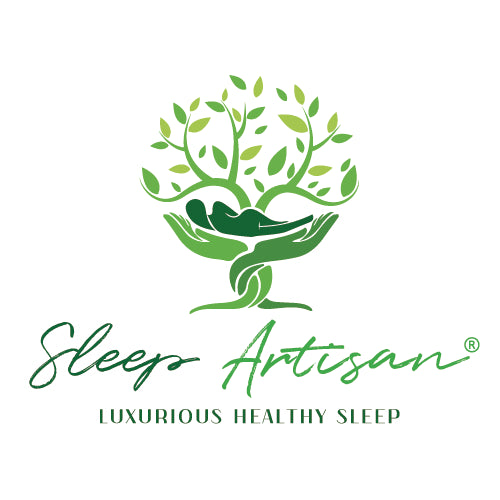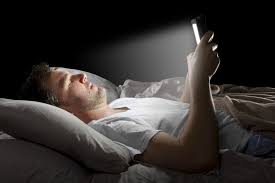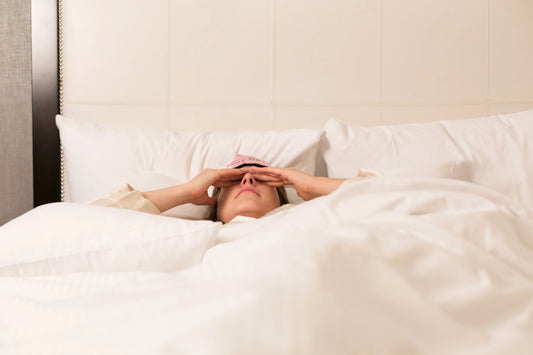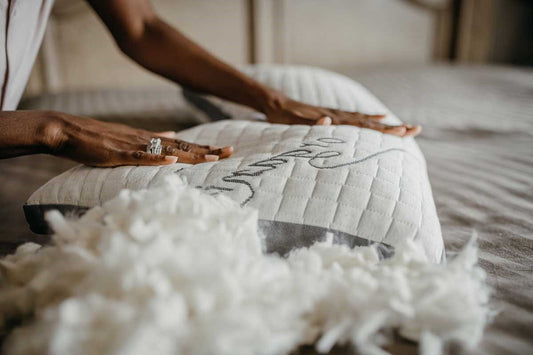
Are you spending more time trying to fall asleep rather than actually sleeping? You’re not alone. Just the act of trying too hard can cause (or continue) a cycle of anxious, nerve-wracking energy that keeps our minds awake.
Poor sleep can have negative effects on many parts of your body and brain, including learning, memory, mood, emotions, and various biological functions. Simple lifestyle changes can make a world of difference to your quality of sleep.
5 Ways to Fall Asleep Faster
Different things work for different people, so take some time to experiment to find what works. You can have the very best bedding and pillow and still have difficulties falling asleep, so here are 5 ways to help you fall asleep faster.
Put your devices down… or protect your eyes.
As much as you might like to unwind by scrolling through Instagram or even reading an article or two, exposing your eyes to blue light can actually prompt you to feel more awake. The National Sleep Foundation recommends to discontinue using electronic devices at least 30 minutes before you head to bed.
If you absolutely can't imagine parting ways with your devices, you should wear blue light glasses while using them.

Adjust your sleep position.
Traditionally, it was believed that back sleepers had a better quality of sleep. However, research has shown that this might not be the best position to sleep in, as it could lead to blocked airways, sleep apnea, and snoring.
Although individual preferences play an important role in choosing sleep position, the side position seems to be linked to high-quality sleep.
Regardless of which position you sleep in, be sure to have a pillow that supports your head and neck with proper alignment. A side sleeper pillow, made specifically for your sleeping position can help you fall asleep faster and stay asleep longer.
Get on a schedule.
Many people find that setting a sleep schedule helps them fall asleep easier.
Your body has its own regulatory system called the circadian rhythm. This internal clock cues your body to feel alert during the day but sleepy at night. Waking up and going to bed at the same times each day can help your internal clock keep a regular schedule.
Set a specific bedtime and try to stick to it every night. If you don't fall asleep within about 20 minutes, leave your bedroom and do something relaxing. Read or listen to soothing music. Go back to bed when you're tired. Repeat as needed.
Once your body adjusts to this scheduled bedtime, it’ll be easier to fall asleep and wake up around the same time every day.
Exercise during the day.
It's no secret that moving your body is the premise of a happy, healthy life. Physical activity is often considered beneficial to healthy sleep.
Exercise can increase the duration and quality of sleep by boosting the production of serotonin in the brain and decreasing levels of cortisol, the stress hormone. Research shows that people with chronic insomnia who exercise moderately just once reduce the time it takes to fall asleep by 55% later that night.
Even if you can't make it to the gym or out on a long run, remember that even a short walk or two throughout the day is a step in the right direction to a better snooze.
Use a White Noise App.
Using white noise apps is a popular and inexpensive way to produce ambient sounds to help people with their sleep. There are now a wide selection of white noise apps available.
White noise apps can help people fall or stay asleep. White noise is a constant soothing sound that blocks out other unwanted sounds that may prevent or disturb a person’s sleep. Examples of white noise include the sounds of steady rain, waves, and a circulating fan.
Everyone is different, so figuring out what works best for you may take some trial and error. Try several of these tips to help yourself get to sleep faster. If your sleep problems worsen over time or do not improve with these tips, there may be a medical cause, such as sleep apnea or periodic limb movement disorder, which requires a doctor’s evaluation and treatment.





